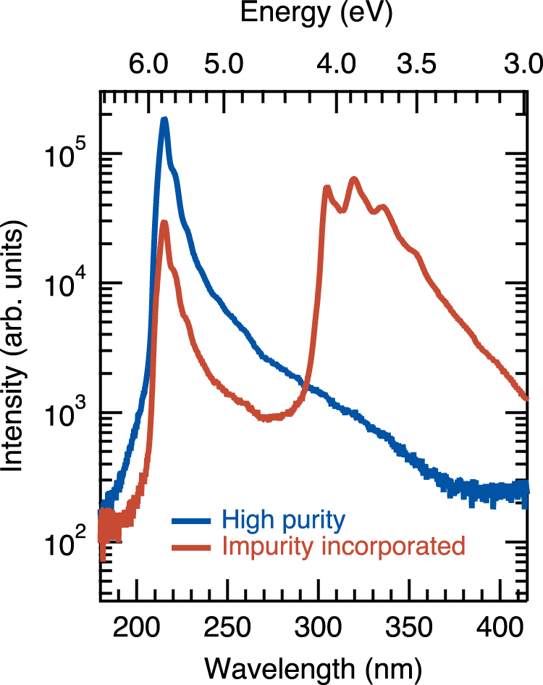npj 2D Materials and Applications ( IF 9.1 ) Pub Date : 2019-10-25 , DOI: 10.1038/s41699-019-0124-4 Kenji Watanabe , Takashi Taniguchi

|
Hexagonal-boron-nitride single crystals grown by high-pressure, high-temperature (HPHT) synthesis are commonly used as the insulated substrate dielectric for two-dimensional (2D) atomic-layered materials like graphene and transition metal dichalcogenides (TMDs) to improve the flatness of the 2D materials atomically without disturbing the 2D electronic characteristics. However, HPHT single crystals often contain impure regions, which can hold subtle clues in regard to the 2D atomic-layered materials for new discoveries in the physics of 2D materials. To identify the position of the impure domains and to avoid them when the 2D devices are prepared, a far-ultraviolet photoluminescence microscope was developed. This microscope makes it possible to visualize the impure-growth region with ease in a no-contact and non-destructive manner.
中文翻译:

高压高温合成六方氮化硼单晶中杂质域的远紫外光致发光显微镜
通过高压,高温(HPHT)合成法生长的六方氮化硼单晶通常用作二维(2D)原子层材料的绝缘衬底电介质,例如石墨烯和过渡金属二卤化物(TMD),以改善在不影响2D电子特性的前提下,使2D材料的平面度达到原子级。但是,HPHT单晶通常包含不纯区域,对于2D物质的物理领域的新发现,该区域可能具有有关2D原子层材料的微妙线索。为了识别不纯区域的位置并在准备2D设备时避免它们出现,开发了一种远紫外光致发光显微镜。这种显微镜可以轻松地以非接触和非破坏性的方式可视化不纯的生长区域。











































 京公网安备 11010802027423号
京公网安备 11010802027423号